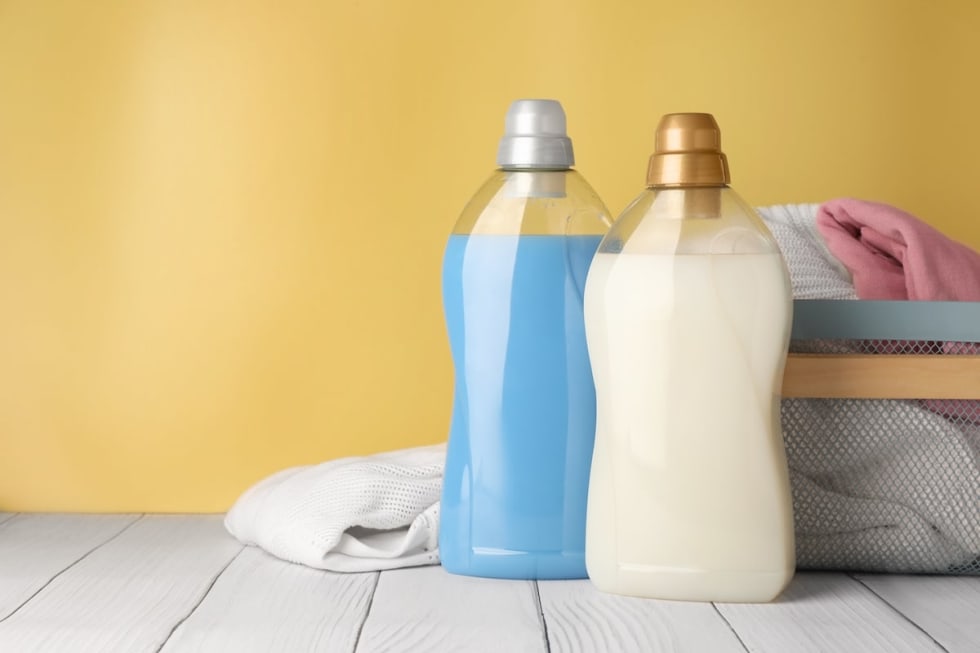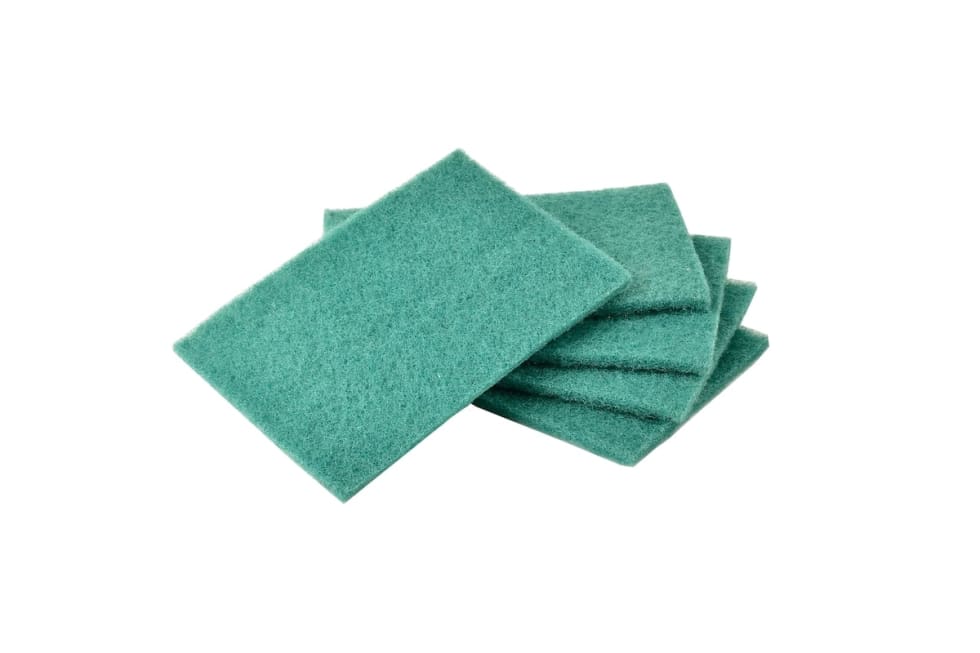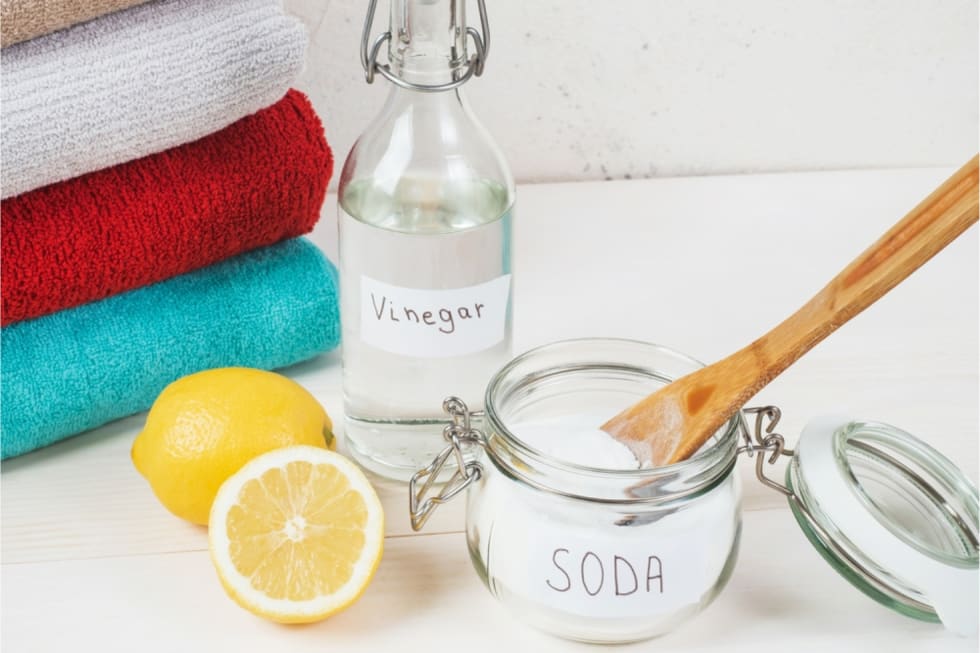10 Lint Removal Tricks That Actually Work (and Why)

Admit it, you've been in the lint roller aisle, staring longingly at those sticky sheets, wishing there was a better way. That’s why we wrote this lint-removal manifesto, packed with 10 genius tricks that ditch the sticky paper and leave your life fuzz-free. So grab your brush, channel your inner lint slayer, and prepare to conquer the world of fluff!
10 Lint Removal Tricks
1. Homemade Static Remover Spray & Vacuum
Forget clingy clothes clinging to your sanity! This dynamic duo harnesses the power of static removal and targeted vacuuming to leave your life (and fabrics) smooth and fuzz-free. First, we remove the static that helps the lint cling onto fabrics, and then we simply vacuum away. Here’s how to get started:
How It Works
- 1 cup distilled water
- 2 tablespoons liquid fabric softener or hair conditioner
- 1 spray bottle
Mix all the ingredients in the spray bottle, and your homemade static slayer is ready to work its magic. Spray lightly on clothes before vacuuming, focusing on clingy areas like sleeves and hems. Then, unleash the vacuum vortex and witness the glorious demise of pesky lint before your very eyes.

Why It Works
Fabric softener molecules coat fibers, reducing friction and static electricity. This means, no more clothes clinging to you like jealous ghosts, and less lint clinging to your clothes like their fuzzy entourage. Vacuum Vortex: With static tamed, a quick vacuum pass becomes a lint apocalypse for any remaining fuzzballs.
Bonus Tip
For extra lint-busting power, add a few drops of essential oil like lavender or cedarwood to your DIY static remover. These natural scents not only smell fantastic but also repel moths and other fabric-loving critters.
2. Air Compressor
For serious fuzz offenders, an air compressor packs a powerful punch. Lint really doesn’t stand a chance against a powerful air compressor, which makes it our number one tip for those who already have one in your house. You can also pair it with your homemade static remover spray for more impact.
How It Works
First, be sure to wear a mask when you’re doing this because it’s going to send dust and debris directly into the air around you. Simply direct a stream of forced air toward the area you want to remove lint or hair from and watch it fly away. Be sure to point the air away from you to minimize the amount of debris near your face. Finally, use a vacuum simultaneously to suck up the debris as its dislodged.

Why it Works
A focused blast of air dislodges even the most stubborn lint clinging to deep fibers. Think dust bunnies trembling in fear, pet hair scattering like tumbleweeds, and lint cowering before the air cannon. To capture the liberated fluff before it escapes, the trusty vacuum acts as your lint-catching accomplice. Position the nozzle near the air blast area, and watch as the fabric becomes smoother and fuzz-free with every whoosh.
3. Rubber Broom (For Carpets)
Forget fancy gadgets and sticky traps, the secret weapon in your lint-busting arsenal might already be hiding in your cleaning closet: the humble rubber broom! Yes, the window-cleaning champion doubles as a superhero against carpet hair and fuzz. Prepare to witness the transformation of your fluff-covered floor into a sleek, hair-free haven.
How it Works
Imagine it like a furry bulldozer. With each pull, the broom's rubber bristles gathers stray hairs, dust bunnies, and even crumbs, pushing them into fluffy clumps you can easily scoop up. Think cat hair tornadoes swirling to a center point, waiting to be banished forever.

Why it Works
The secret lies in the rubber. The squeegee's bristles create static electricity as it glides, attracting hair and dust almost as effectively as sticky surfaces like tape. This gentle static cling, combined with the broom's scraping power, lifts even the most deeply embedded fuzzies without damaging your carpet.
Bonus Tip
For extra oomph, sprinkle baking soda on your carpet before sweeping. The baking soda absorbs odors and loosens even more debris, making your floor not just hair-free, but fresh and fabulous.
4. Pumice Stone
You know that rock you have in your bathtub for exfoliating? Did you know it can work wonders on fabric surfaces, too? The pumice stone is lint-busting rockstar with ancient wisdom and modern magic. Don't be fooled by its rough exterior; this volcanic friend transforms fuzzy sweaters and pilled jackets into smooth, sleek silhouettes.
How it Works
Think of the pumice stone's surface as a tiny mountain range for lint. Those rough, porous peaks gently snag and remove pesky fuzz and pills, smoothing out the fabric like a miniature sand-and-sea treatment. No harsh chemicals, just pure, gentle exfoliation for your clothes.
Go for a natural pumice stone for the most gentle touch on delicate fabrics. Opt for a pumice with a handle for easier grip on larger garments. Gently rub the pumice stone in the direction of the fabric's weave. Think petting a fluffy cloud, not scrubbing a dirty floor. Work in small sections, focusing on areas with prominent pilling or fuzz.
For extra caution on sensitive fabrics, pre-test the pumice stone on an inconspicuous area like a seam. Remember, gentle strokes are key; no need to channel your inner rock climber.

Why it Works
The pumice stone's porous surface acts like a magnet for fuzzy fibers. Its gentle abrasiveness lifts and removes pills and lint without damaging the fabric itself. Think exfoliating for your clothes!
Bonus Tip
For stubborn pills, combine pumice power with a fabric brush. Brush in the same direction as the fabric weave, following up with the pumice stone to polish off any remaining fuzz.
5. Dryer Method
Sometimes, the best lint-busting weapon is already lurking in your laundry room: the mighty dryer! Just tossing your favorite garment into the dryer for a quick tumble is usually enough to dislodge most stubborn lint and hair, especially if you throw a dryer sheet or ball in.

Why it Works
As your clothes tumble in the dryer's warm embrace, the spinning drum acts like a lint tornado. Friction dislodges clingy fibers and hair, while the airflow whisks them away, leaving your clothes smooth and fuzz-free. Think miniature dust bunnies swirling into oblivion, never to return.
Bonus Tip
Boost the dryer's lint-busting power by tossing in a clean tennis ball with your laundry. The ball's bumpy surface agitates the clothes, further loosening and collecting lint for the dryer to whisk away.
6. Scouring Pads
Don't underestimate the scouring pads’ rough exterior; this kitchen hero tackles stubborn lint on furniture and carpets with its gritty gusto.
Why it Works
Think of the scouring pad's surface as a microscopic army of lint assassins. Those tiny, abrasive fibers snag and pull away even the most clinging fuzz and pet hair. It's like giving your furniture a gentle sandpaper treatment, buffing away surface fuzz and leaving a smoother, sleeker finish.

Bonus Tip
For optimal lint-slaying, choose a non-scratch scouring pad specifically designed for delicate surfaces. You don't want to trade lint for fabric snags!
7. Masking Tape
This versatile wonder offers a gentle stickiness that traps fuzz without leaving behind sticky residue or damaging delicate fabrics.
How It Works
- Wrap a length of masking tape around your hand, sticky side out (feel free to get creative with patterns for extra fun).
- Pat the tape gently onto lint-covered surfaces, focusing on areas with stubborn fuzz.
- Peel away the tape, taking the linty bandits with it! Repeat as needed.

Why It Works
Masking tape's adhesive is designed to create a temporary bond, making it ideal for lint removal. It grabs onto fibers and hairs without embedding itself too deeply into fabrics, allowing for easy removal without leaving a sticky mess. Unlike duct tape or other strong adhesives, masking tape won't damage delicate fabrics or leave behind a sticky residue. It's also readily available, inexpensive, and useful for a variety of other tasks.
8. Dryer Sheets
There's plenty of reasons to love the dryer sheet method: It's a product you often have on hand, it's easy to use, and it will leave your clothes smelling great. Simply grab a dryer sheet and use it as you would a lint roller. The only downside is that it may not work on ragged fabrics that have formed very tight bonds to the hair or lint on them.
Why It Works
Dryer sheets have an anti-static effect that loosens the bonds between cloth and hair. Rubbing a dryer sheet gently against your clothes activates the coating, smoothing fibers and reducing pesky cling. This means no more clothes clinging to you like jealous ghosts or attracting lint like fuzz magnets.

9. Vinegar Rinse
Vinegar is an acidic marvel that loosens clinging fibers and neutralizes odors, leaving your clothes fresh and fuzz-free.
How it Works
- Add a cup of white vinegar to your final rinse cycle, replacing fabric softener.
- Witness the lint-busting magic! Vinegar loosens clinging fibers, making them easier to remove during the spin cycle.
- Marvel at the freshness! Vinegar neutralizes odors, leaving your clothes smelling clean and free of funky fuzz.

Why it Works
Think of vinegar as a microscopic lint dissolver. The acid gently loosens the bonds between fibers, allowing them to release trapped lint and hair. Plus, vinegar's acidity neutralizes odor-causing bacteria, leaving your clothes smelling as fresh as a crisp spring morning.
Bonus Tip
For extra oomph, pre-soak heavily lint-covered garments in a diluted vinegar solution (1 part vinegar to 4 parts water) for 30 minutes before washing. This extra soak gives the acid time to work its wonders on stubborn lint.
10. Fabric Shavers
Fabric shavers are a high-tech weapon against stubborn pills and tufts. This precision tool gently removes surface fuzz and pilling, leaving your clothes looking sleek and new.
Why it Works
Fabric shavers are essentially tiny lint vacuum cleaners. Their rotating blades carefully shave off unwanted fuzz and pills without damaging the fabric underneath. Trimming away all the fuzzy offenders leaves a smooth and polished surface behind.

Bonus Tip
Invest in a fabric shaver with adjustable settings to cater to different fabric types. Start with the gentlest setting on delicate garments and work your way up for coarser fabrics.
Looking for a New Apartment?
If you're not just looking to change up your living space but to actively move to a new location, let Apartment List help! Take our easy quiz to get matched with an apartment in your ideal location, budget, and with great amenities!
Lint Removal FAQs
What is the Most Effect Lint Remover?
While every lint-battler has its strengths, for raw power and versatility, the air compressor takes the crown. This mighty machine blasts away even the most stubborn lint and pet hair with a focused stream of air. Imagine it as a lint tornado, whisking away fuzzy offenders without harming delicate fabrics. Plus, you can team it up with your trusty vacuum to capture the dislodged fluff before it escapes, making it a double lint-busting duo!
What Works Better than a Lint Roller?
For deep-seated fuzz and pilling, the humble pumice stone outshines the lint roller. Its gentle abrasiveness lifts and removes clinging fibers, leaving your sweaters smoother and sleeker. Think of it as a mini exfoliation treatment for your clothes! Just remember to choose a natural pumice stone for delicate fabrics and use gentle strokes for a fuzz-free finish.
Do Lint Brushes Actually Work?
They do! Lint brushes work wonders for surface lint and dust, especially on delicate fabrics where harsher methods might snag. However, they can be time-consuming for heavily covered garments. To boost their effectiveness, try pre-treating with a static remover spray. This attracts loose fibers, making them easier to capture with the brush, leaving you with a smoother, fuzz-free surface in no time.
What Can I Use as a Makeshift Lint Roller?
When in a pinch, the readily available masking tape becomes your lint-busting hero! Simply wrap a length around your hand, sticky side out, and gently pat it onto lint-covered areas. The tape's gentle adhesive traps fuzz without leaving behind residue. It's perfect for quick fixes on furniture, carpets, or even clothes in a pinch.
Do Electric Lint Removers Work?
They can! Electric lint removers offer convenient, targeted fuzz removal for certain fabrics. However, they don't handle large areas or delicate textures as well as other methods like masking tape. Consider them for specific jobs like pill removal on sweaters or fuzz on upholstery, but keep your trusty tape and other tools on hand for versatile lint-busting action.
Are Lint Removers Bad for Your Clothes?
Most common lint removers, when used properly, are gentle on your clothes. However, some exceptions exist. Electric lint removers with sharp blades can snag or damage delicate fabrics if not used cautiously. Likewise, abrasive methods like scouring pads should be reserved for tough surfaces and used with care on softer fabrics. Always test any new method on an inconspicuous area before tackling the entire garment.
Share this Article




